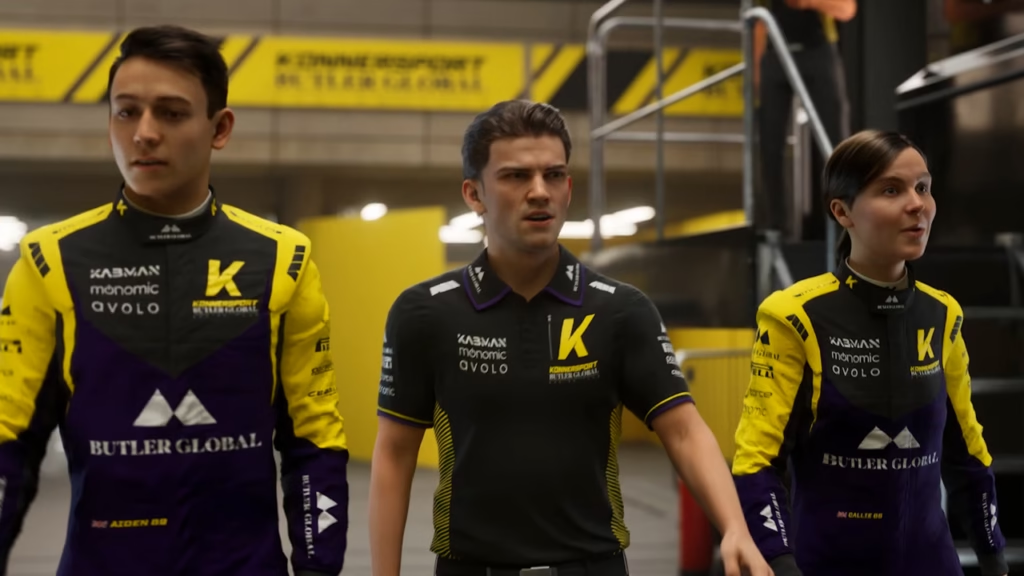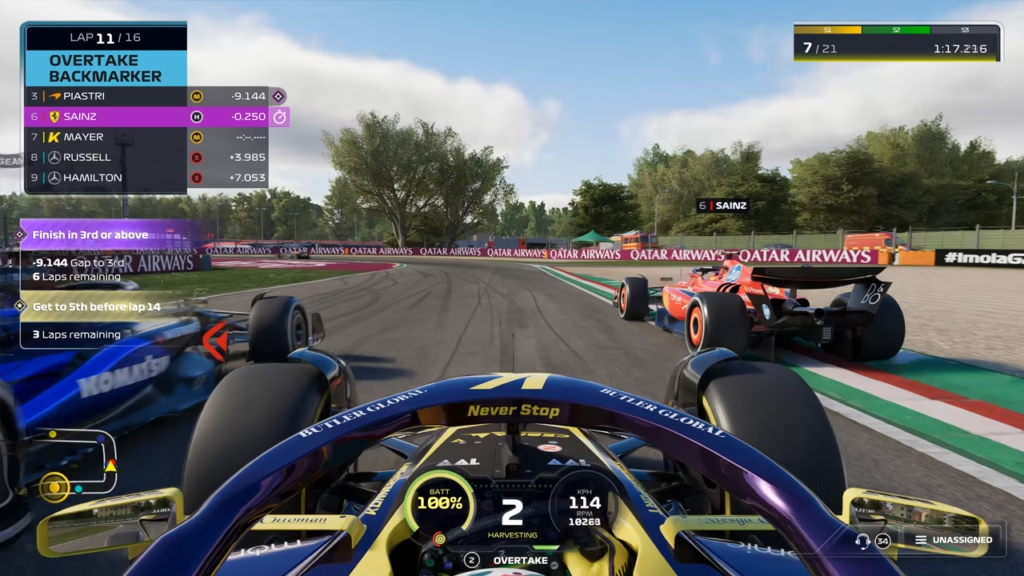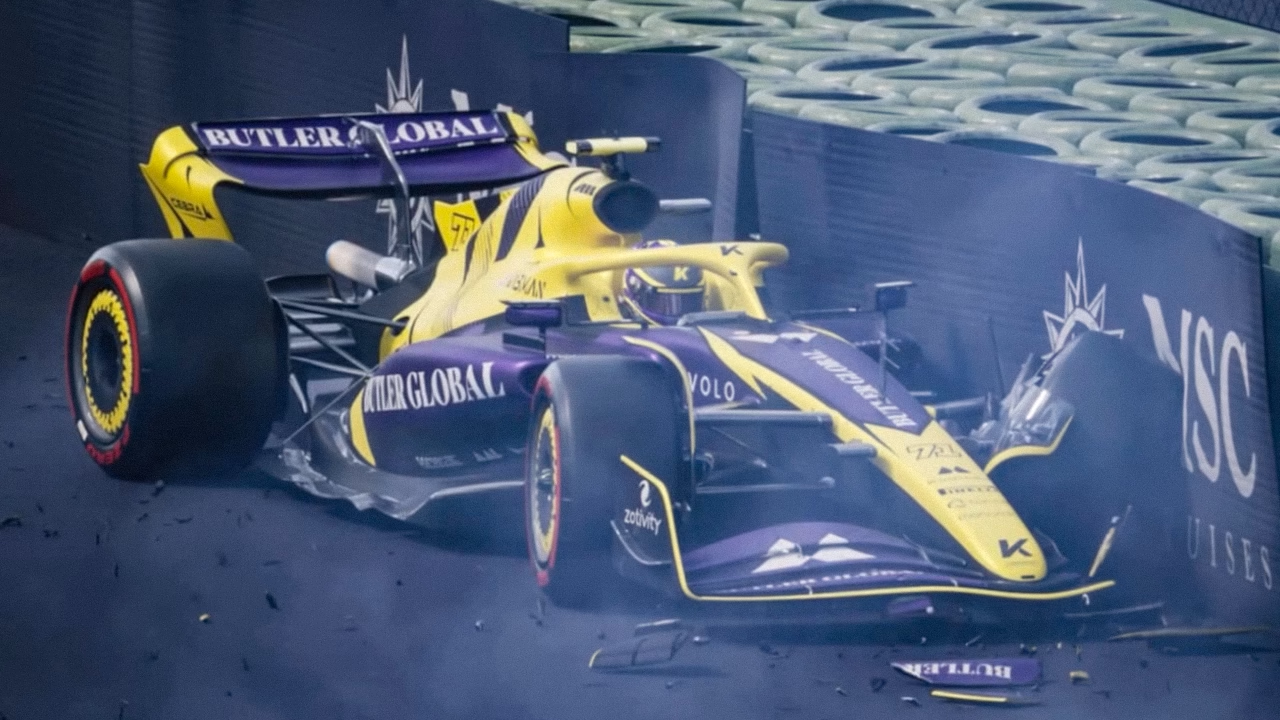Drive to Survive is the bane of my existence (as a fan of Formula 1 racing). For me, Formula 1 has always been about engineering and racecraft, about pushing the limits of technology and motorsport. Drive to Survive focuses on none of this and is, to my mind, little better than the saas-bahu dramas that have plagued Indian TV for decades now.
I will, however, begrudgingly acknowledge that despite the fact that Drive to Survive is more a well-produced soap opera than the documentary-style show it pretends to be, it does appear to have played a leading role in rekindling interest in F1 and introduced a fresh audience to the people behind the sport.
By the same token, F1 25 looks the part, makes all the right noises, offers official team, track, and driver rosters, and even features commentary tracks from Crofty himself (aka David Michael Croft, the lead commentator for Formula 1). Taking full advantage of Nvidia’s path-tracing prowess and related technologies (DLSS, Reflex, and MFG) the game often crosses into “Is this real?” territory while running impeccably at 4K at 200+ FPS. Rain looks downright incredible.
As an introduction to F1 for gamers who are new to the sport, F1 25 makes a fantastic first impression. Dig a little deeper, however, and as with Drive to Survive, the lack of substance gets tiresome very quickly.
Let’s dig.

F1 25 is not a sim
I play with a Moza R5 direct drive wheel. It’s an entry-level setup by sim racing standards but far superior to controllers and most popular wheelbase options (including the venerable Logitech G29). I bought an R5 because I love sim racing and so I expect any racing game to deliver meaningful feedback and an immersive experience.
Not being an F1 driver, I can’t definitively say that F1’s driving model is unrealistic, but compared to the sims I play (Automobilista 2 and Assetto Corsa Competizione), it certainly feels unrealistic and bland. I can’t sense if I’m pushing the limits of grip, the steering wheel seems to vibrate at random, and I could sense kerbs more through audio than force feedback (for those wondering, I was playing with all assists except ABS turned off, and force feedback set to 100%).
Cars remain planted till they’re not, ERS and DRS are essentially auto-overtake buttons, and tyre wear and type appears to have almost no impact on the game — I won a dry race on inters once, and by a 40-second margin at that. There’s also no sense of speed or style.
Codemasters somehow managed to turn one of the fastest, most visceral racing experiences on the planet into something utterly featureless and bland. I can understand why the developers chose to avoid hardcore sim physics in favour of accessibility, but what was stopping them from injecting some style à la NFS: Shift or Forza Horizon?
Case in point:
Braking Point 3 isn’t half bad
The only highlight for me was Braking Point 3 — the third episode of a Drive to Survive-style storyline that is now a core part of the F1 video game experience (it’s telling that driving physics and racecraft are not). Having not played F1 21 and F1 23, I’m out of the loop on the story front, but given how pointless the plot is, I enjoyed it well enough as is in a largely mindless fashion. More than the plot, though, I was surprised to find that I was a big fan of Braking Point 3’s execution.
Racing sims and racing games in general can be tedious when you’re starting out. Given the focus on realism, you’re often expected to hit the ground running and usually have to experience grindy, 45-minute races to progress. I revel in the grind and realism now, several hundred hours into my sim-racing career, but I hated it when I first started racing as I found the learning curve too steep. This is the part that Braking Point 3 unintentionally addresses (as does the F1 movie tie-in where you get to re-live key moments from the film).

This game mode focuses on a few key events as part of a story rather than having you experience a full race weekend. Every chapter — there are 15 of them — throws you into the driver’s seat mid-race and gives you a set of objectives: Overtake P5 by lap 11, defend your position to give your teammate some breathing room, respond to a mid-race crash etc.
These races pushes you to succeed without significantly penalising you for failing, are fun, far more approachable than career mode, and by far my preferred mode of play. These shorter segments last only about 10-15 minutes, but allow you to enjoy a curated, beginner-friendly F1 experience without the tedium. If anything, I wish Codemasters had gone a step further and treated Braking Point as an expanded tutorial of sorts that comprehensively covers the basics.
Beyond this, there’s not much I liked. There’s a team management mode that lets you act as team owner/principal that is somewhat fun, you can try your hand at F2 racing if you feel like it, and multiplayer can be fun if you’re playing with friends. There’s nothing unique or special here, and certainly nothing that’s not been done a million times better in other racing games.
DNF
At the end of the day, I think I’m just disappointed at the wasted potential I see here. The initial wow factor and graphics should be plenty for Drive to Survive fans and casual players, but it won’t be long before even they get bored.
Game reviewed on PC. Review code provided by publisher


